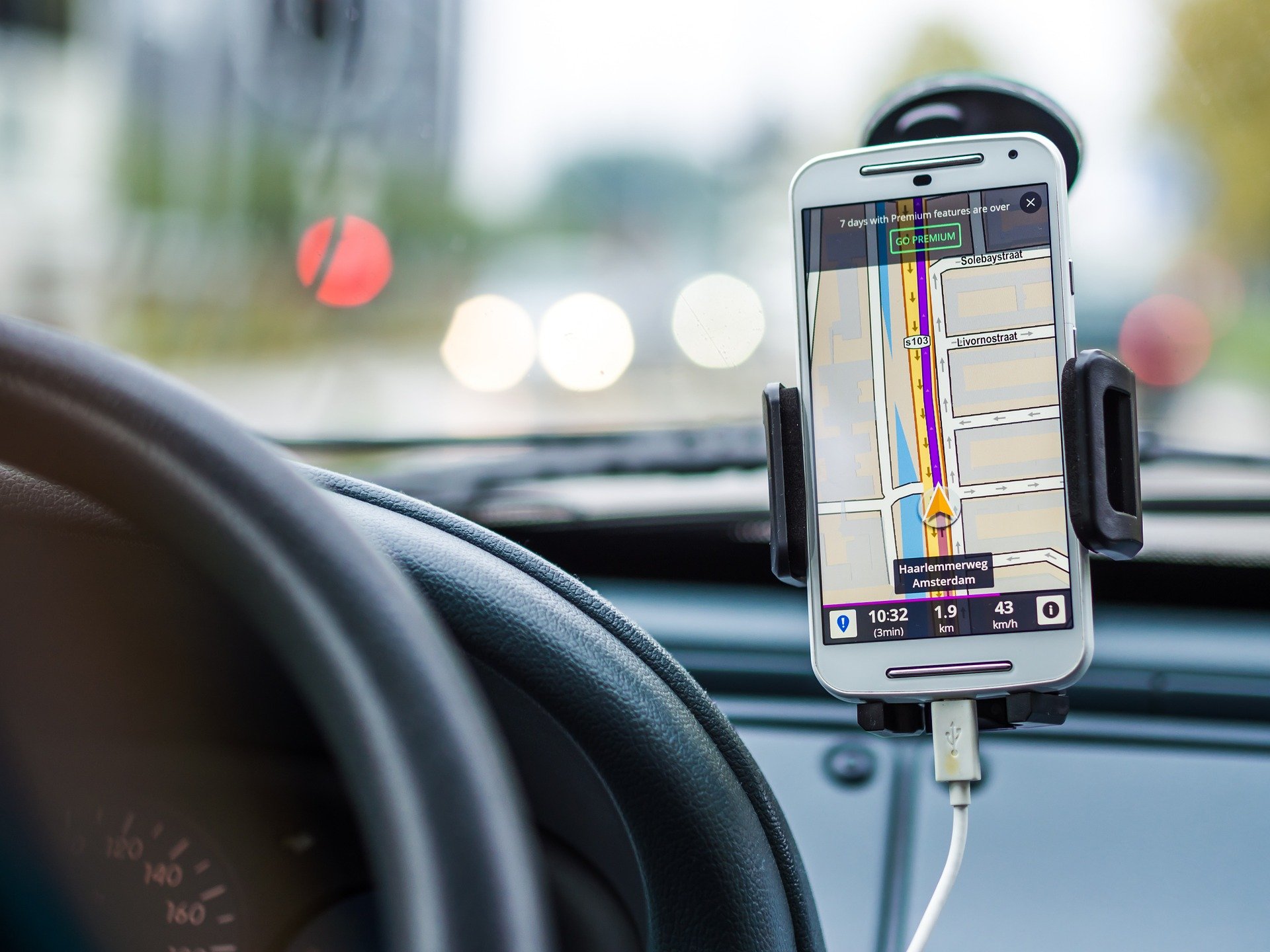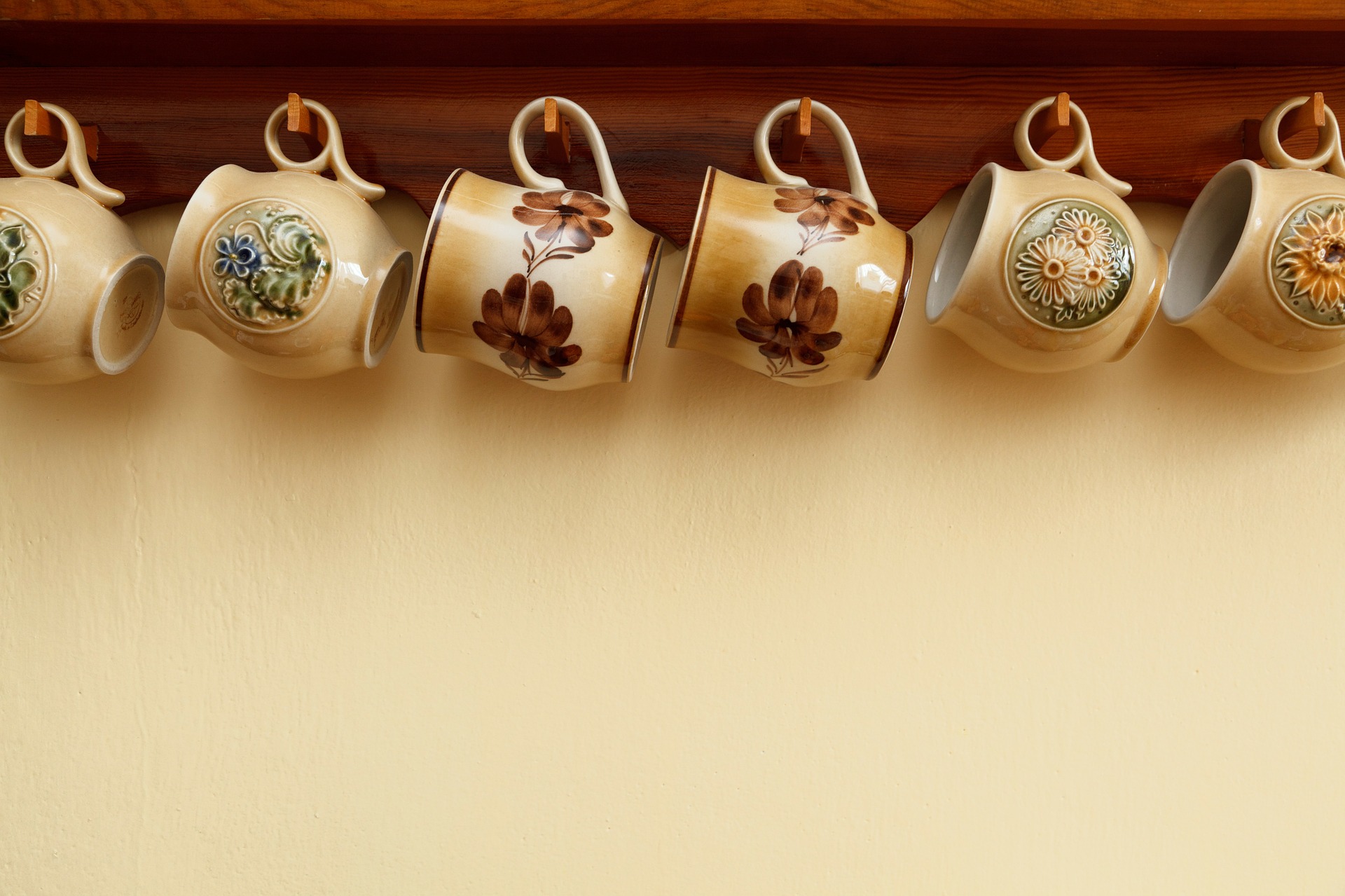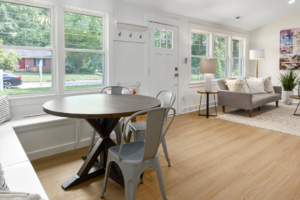5 Strategies to Cull Your Cherished Pieces
As I write this, there are raging wildfires and powerful floods in many parts of the United States (and other parts of the world). People are losing some or all of their possessions as they flee just ahead of nature’s fury.
I do not want to minimize their devastating losses, however, I want to pose a situation:
You get a phone call, a police officer states that you have 10 minutes to evacuate your home. What will you take with you?

Once you get past shock and denial, you have nine minutes left. Not much time to think, locate things, and pack.
I realize there are necessities to take: clothes, medications, pets, important documents, and more. However, I want to focus on the sentimental and often totally irreplaceable items: those things that represent your life and that of your family. Beyond photos, there may be jewelry or furniture that’s been passed down through generations. You could have a wedding dress or other item that has special meaning. What do you do?
Beyond a natural disaster, there are other life transitions for which consistently living with a RIGHT-SIZE MINDSET eases the adjustment period.

Below is a scenario using a much less significant item, which illustrates the emotion attached to objects and how to make smart choices about what to keep.
You have coffee (or tea!) mugs stacked up on multiple shelves. Just the other day you broke a mug as you tried to keep them balanced on the shelves. “That’s enough!,” you exclaim. “Surely I can give away a few mugs so I won’t have this problem.” Sound familiar?
Out of the 25 mugs you count, you decide to keep 12 since that will be more than enough for your needs. Great job setting a real boundary!
You immediately eliminate two: a plain one and one that an ex-friend gave you. Yeah! Only 11 more to delete.
Sounds pretty simple, right? Let’s proceed:
- “That one can leave. It’s too small to be useful…Oh, wait! Granny brought that to me from her trip to China, I can’t give that one up.”
- “I can’t use this one with a crack.” You turn to put it in the trash when you see the other side and realize that’s the first one you ever bought from your alma mater. It has to stay!
- “This one is from a set that I never really liked, so it can be donated.”
- “I got this one after picking tea at the tea plantation in India. Clearly, I have to keep it.”
- “This one doesn’t have a handle, so it’s really too hot to hold. What a minute, I bought it at a workshop that employs the disadvantaged. They do such good work, I need to keep this one.”
- “Yes, I bought this cute mug at a craft fair, but it’s actually too big. I never use it, so I can donate it.”
At this point, you’ve only deleted two out of the 11. Maybe this isn’t so simple
You’ve gotten stuck in that annoying brain chatter we discussed in 3 Steps to Adopt a Right-size Mindset for your Space (& decrease stuff-overwhelm). And that inner voice does a great job of thwarting your right-sizing effort.
It’s time to prevent that internal clutter from getting the upper hand.

Reverse course. Pick out the 12 you’ll keep rather than the 13 you’ll delete. Yes, I know the math is the same, however, it’s often easier for our brain to choose the treasures to keep than the pieces to remove.
Repurpose. First, how might you repurpose it? For instance, I’ve used mugs to hold pens, make-up tools, and paint brushes. A large flower vase keeps my cooking spoons and spatulas next to my stove.
Second, how might someone else reinvent it? The Scrap Exchange in Durham takes a wide variety of items and resells them to people who use them for many different purposes. People are so creative; I can’t even imagine how the mugs might be utilized.
Demystify the quantity. When we’re working to right-size one area, such as mugs, we often forget that we may have other sources that hold our sentiments. For example, the mug your Granny brought you from China is tied to your Granny, not China. What other items remind you of Granny? You probably have several; the mug can leave.
Looking at the overall quantity of items that invoke similar memories helps you keep those that are most meaningful.
 Talk back. Your inner voice exclaims, “Wait! You can’t throw out that mug from your alma mater. It’s the first one you ever bought. Nothing can replace that!” Either out-loud or in your head say, “I realize this is the first mug I bought from my alma mater. In fact, I don’t have any other mugs from there. However, I have plenty of other items that bring back those same memories, so this mug can go!”
Talk back. Your inner voice exclaims, “Wait! You can’t throw out that mug from your alma mater. It’s the first one you ever bought. Nothing can replace that!” Either out-loud or in your head say, “I realize this is the first mug I bought from my alma mater. In fact, I don’t have any other mugs from there. However, I have plenty of other items that bring back those same memories, so this mug can go!”
Show Respect. An item can’t spark memories if it is buried in a box or the back of a cabinet.
What are some alternatives? #1: display the “memory mugs” that you don’t use on a small floating shelf. #2: take a photo and keep it with related pictures (keep the picture of the mug from India with other photos from India), then delete the item. #3: create a special container (boundary!) for your memorabilia.
If you’re curious, given 10 minutes, I would take:
- Purse & keys. They’d go in the car first so that they didn’t get misplaced in my haste.
- My cat and her food-which happens to be on the shelves right next to my car in the garage.
- Medication and clothes. I’d grab the first large bag I saw and throw in prescriptions and basic clothes. Once the bag was full, I’d take it to the car.
- Older scrapbooks. I’d choose the earliest ones
because those photos are only in hard copy as they were printed from a film camera.
If I still had time, I’d go for whatever jewelry and small memorabilia items within reach.
I would leave behind
- Recent scrapbooks. Photos in those are digitally saved in two locations outside my home.
- Family heirlooms. The desk that’s been in my family since 1900. Jewelry passed down generations and that I’ve collected from around the world. Handmade area rugs from foreign countries.
- Electronics. With a natural disaster, my external hard-drive wouldn’t be much use. That is why I also have an off-site backup that runs nightly. (By the way, my phone is always in my purse or clipped to my waist.)

It wouldn’t be easy! However, when time is limited, difficult decisions must be made.
To be more prepared, I want to create a digital copy of my older scrapbooks and ensure the most up-to-date documents are available digitally, among other things.
What steps will you take to be prepared for life transitions-planned or unexpected?
Need help with your brain chatter? Life Transitions Organizing collaborates virtually to help clients cut through their verbal clutter. Contact us TODAY to start deleting your less treasured so you can be surrounded by the things you love and enjoy!


